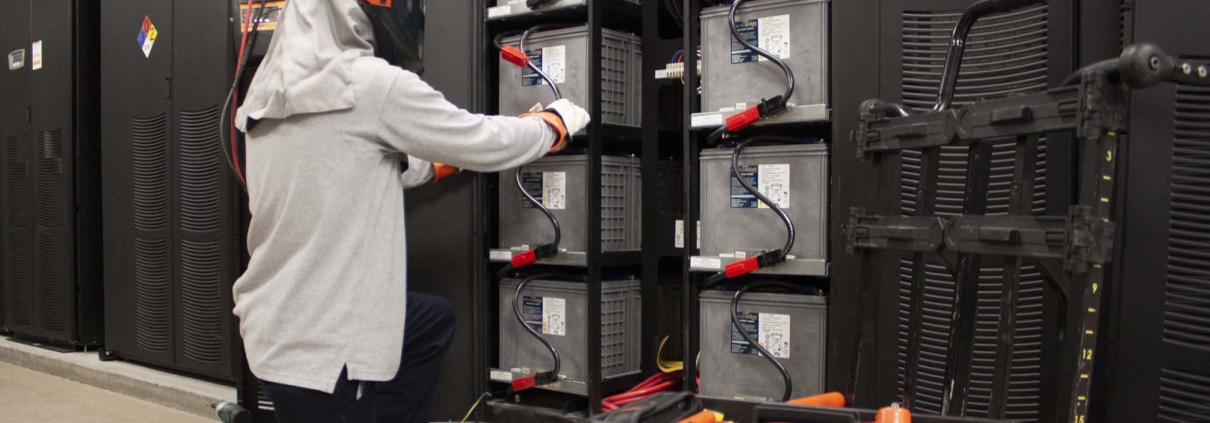Understanding Uninterruptible power supply Applications: Types, Industry Use Cases, and Key Differences
Introduction
Uninterruptible power supply (UPS) systems play a critical role in protecting businesses from unexpected power interruptions. From ensuring continuous operation of servers in data centers to maintaining vital industrial processes, UPS systems safeguard equipment, data, and operations. This article provides a comprehensive overview of UPS functionality, types, typical applications across industries, and key differences that can help North American businesses and distributors make informed decisions.
- How UPS Works
At its core, a UPS is designed to provide temporary power to critical equipment during power outages or voltage fluctuations. Here’s a simplified overview:
- Normal Operation: When utility power is stable, the UPS supplies power directly to connected equipment while simultaneously charging its internal batteries.
- Power Interruption: If the mains supply fails, the UPS instantly switches to battery power, ensuring zero or minimal downtime.
- Battery Role: The internal battery is essential for providing the bridge between power loss and generator activation or restored mains power.
Lithium-ion UPS Advantages (Neutral Overview)
Compared to traditional lead-acid batteries, lithium-ion UPS systems offer several notable benefits without implying that other battery types are inferior:
- Longer lifecycle and higher charge/discharge cycles
- Faster recharge times, enabling quicker recovery after outages
- Higher energy efficiency and lower maintenance requirements
For North American businesses looking for reliable lithium UPS solutions, see Li-ion UPS Solutions.
For readers looking for a more detailed guide on commercial and industrial UPS selection and deployment strategies, this article provides strategic insights: What is a UPS Battery: A Strategic Guide for Commercial and Industrial Decision Makers.
- Types of UPS Systems
UPS systems are broadly classified into three categories, each suitable for different applications:
| UPS Type | How It Works | Typical Applications | Key Advantages |
| Offline/Standby UPS | Supplies utility power directly; switches to battery on outage | Small offices, home offices | Low cost, simple design |
| Line-Interactive UPS | Regulates minor voltage fluctuations; switches to battery during major power loss | Small to medium businesses | Voltage correction, moderate protection |
| Online/Double-Conversion UPS | Converts power to DC and back to AC continuously; zero transfer time | Data centers, hospitals, industrial systems | Maximum power quality, zero interruption |
- Typical UPS Applications Across Industries
UPS systems serve critical roles across multiple sectors:
Data Centers
- Protect servers and networking equipment
- Minimize downtime and data loss
- Support high-density rack environments
For a deeper look into how UPS systems optimize reliability, efficiency, and battery management in data centers, see: Data Center UPS Power: Optimizing Reliability, Efficiency, and Battery Management.
Telecommunications
- Ensure uninterrupted operation of cell towers and network switches
- Critical for continuous communication services
Industrial & Manufacturing
- Maintain control systems and automated processes
- Avoid costly production line interruptions
Healthcare
- Power life-support and critical medical devices
- Ensure compliance with healthcare safety regulations
Commercial & Office Environments
- Protect IT infrastructure, point-of-sale systems, and conference equipment
- Support business continuity during short outages
In all these scenarios, lithium-ion UPS systems can offer efficiency and maintenance benefits, making them a practical choice for businesses that prioritize energy savings and reduced operational complexity.
- Key Differences of UPS Across Industries
When evaluating UPS solutions, not all systems are created equal. Consider the following factors:
| Industry | Typical Power Demand | Battery Type Preference | Runtime Needs | Maintenance Complexity | Cost Consideration |
| Data Centers | High | Lead-acid or lithium | Extended runtime | High | Balance initial investment vs TCO |
| Telecommunications | Medium | Lithium increasingly preferred | Short to moderate | Low | Operational efficiency |
| Industrial Manufacturing | Medium to High | Lead-acid or lithium | Moderate | Moderate | Downtime cost-sensitive |
| Healthcare | Medium | Lithium often preferred | Critical | Low | Reliability prioritized |
| Office/Commercial | Low to Medium | Lead-acid or lithium | Short | Low | Budget-conscious |
This type of structured comparison helps North American businesses, integrators, and UPS distributors select systems appropriate for each sector.
- Conclusion
UPS systems are essential for ensuring uninterrupted operations across industries. By understanding the functional differences, types of systems, and how they perform in various applications, businesses can make informed decisions that balance reliability, efficiency, and cost.
Lithium-ion UPS systems, in particular, offer advantages in energy efficiency, maintenance, and lifecycle management. For those seeking reliable and future-proof solutions, Li-ion UPS Solutions provide an effective choice for North American enterprises and channel partners.


